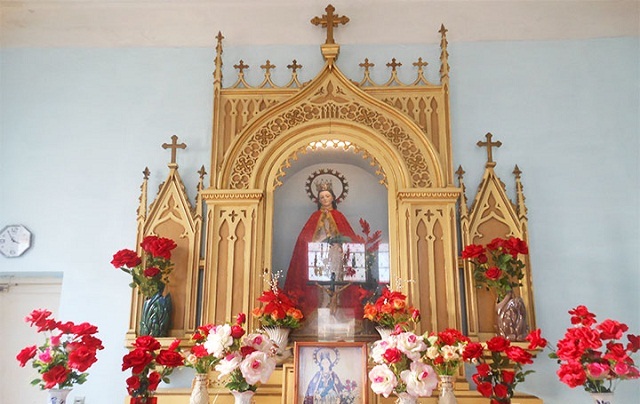Mayabeque is a territory with a great wealth of culture and original cultural manifestations. Here, peasant folklore and dance art live in the memory of the people since ancient times. The arrival of Haitian, Caribbean, Spanish and Chinese immigrants in the 19th century, who came in search of work, left a cultural imprint on our communities. They brought their traditions with them, and drinks, crafts, music, language, dances and rhythms, and religion, which were displayed during the festivities in their villages.
Charangas de Bejucal

Traditional music festival that has been celebrated for more than 100 years and it is held always at the same time of the year. It is also pretty related to the Misa del Gallo (Rooster service), held on December 24th. Tradition and dances go around the locality. The town is divided into two, the "La Espina de Oro" (The Golden Thorn) and "La Ceiba de Plata") (Silver Ceiba), which establish a fraternal competition. People get organized on the streets to represent their parties and create thousands of surprises to better their counterpart.
The ruling Spaniards and Creoles living in Bejucal allowed the festivities to take place. They gave the name of Musicanga (which meant disgusting music of poor taste) to one group, and the others decided to participate by forming a group they called the Malayos (which meant red roosters). The rival groups decided to give themselves more showy names: The Musicanga was called Ceiba de Plata;(Silver Ceiba); and the Malayos, the Espina de Oro;(The Golden Thorn). It involves a performance from Los Tambores de Bejucal (a typical Cuban percussion band of high International prestige).
The members of the Ceiba de Plata group, characterized by blue color and a scorpion as their symbol compete with the members of the Espina de Oro, who wear red and have a rooster as a symbol to see who succeeds Play the drums with the highest and most impressive sound. Typical food at the Charangas include pan con lechón (pork sandwich), popcorn, churros (fried dough strips) and cotton candy.
Each show comes along with its own conga and fantastic dancers attired with allegorical costumes. It is funny to see the parade starred by the sarcastic and picturesque characters “la Macorina” (a man fancily dressed as a woman), and many others, become as part of the popular imaginary.
The origin of the Charangas is quite similar to that of the Parrandas de Remedios and the Santiago de Cuba Carnivals and date from 1830. At the beginning the party was of a purely religious character.
The day of Santa Bárbara/Changó.

A syncretic festival that takes place on December 4, with great popular roots in Güines. It is a city, like almost all Cuban cities, marked by a historical process that the Cuban anthropologist Don Fernando Ortiz defined as transculturation. Here the Spaniards and the Blacks, the Creole and the Mulattos merged; unmistakable mix of customs, traditions and religions.
The neighborhood of Leguina, Güines, could be well defined as the great melting pot created during several centuries.
The Santa Barbara of today does not hide its face, as it happened in colonial times. She remains in its Chapel and is adored by thousands of people who come from all over the country, and also from abroad. People give offerings to Changó (Santa Bárbara), they make promises to him, they even show the result of the kindness of the virgin when fulfilling their wishes. It is faith and spirit, song and complain for the good and bad things of this world.
In Güines, on the Festival days people dress in red, the color of Changó, and the statue of Santa Bárbara is taken down from the altar and paraded through the streets of towm on a platform hoisted aloft on men’s shoulders. Therefore, December 4th is a day full of songs, laughter and tears.
We Cubans have learned to pass through many roads, the one that leads to Güines also leads to Changó. This is a Villa that, like no other in the island, remains clinging to Santa Barbara, its image is here promise and dream, a tradition that typifies the güinero (Güines inhabitants) and that transcends the limits of its borders.
Freddy´s House
Ancient home that treasures valuable pieces, a sanctuary of the afrocuban religion of Yoruba origin. There is now an ethnological museum also known the “Palace of the Orishas”.